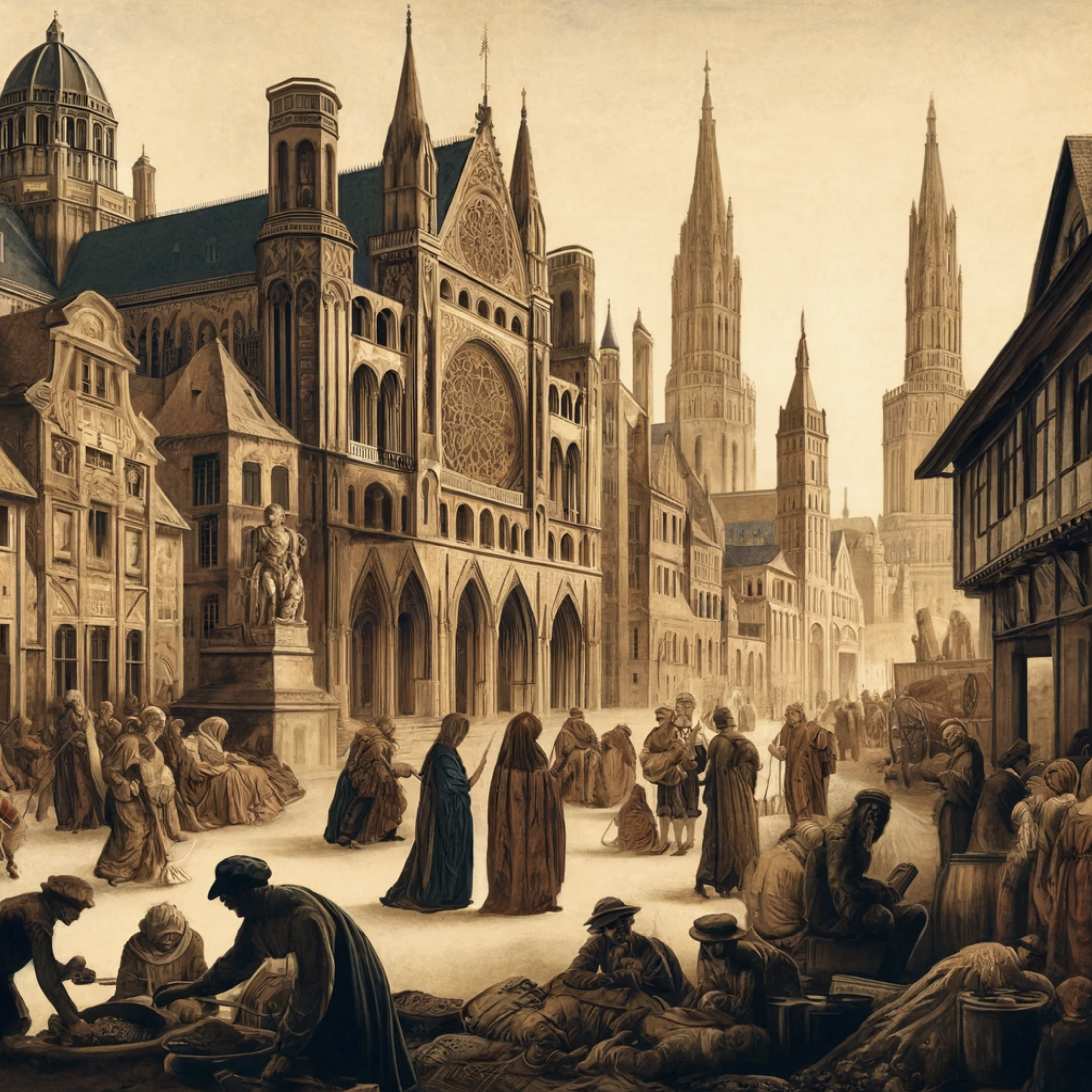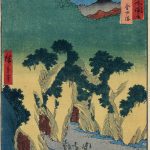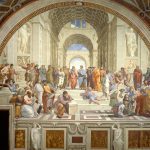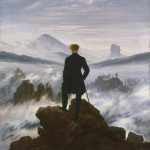
Art lovers and historians alike often view the Renaissance as a shining era of cultural rebirth, marked by unparalleled advancements in art, science, and human thought. This period, which spanned roughly from the 14th to the 17th century, is frequently romanticized as a golden age of enlightenment and progress. However, a closer examination reveals a much more complex and multifaceted reality. Beneath the glittering surface of Renaissance achievements lies a tapestry woven with threads of inequality, violence, and struggle.
The Myth of the Golden Age
The Renaissance is often portrayed through a lens of idealism, where brilliant minds like Leonardo da Vinci and Michelangelo brought forth a new dawn of human creativity. This perception is perpetuated by countless books, films, and educational curricula that highlight the era’s most luminous aspects. We are enchanted by tales of artistic masterpieces, architectural wonders, and groundbreaking discoveries that seemingly lifted humanity to new heights.
However, this idealized narrative is the result of selective historiography, where certain elements are amplified while others are conveniently overlooked. The Renaissance humanists themselves played a significant role in shaping this perception, glorifying their age and often downplaying the less flattering realities. Their writings emphasized a return to classical ideals and intellectual purity, creating a historical record that reflects their aspirations rather than the complete truth.
In reality, the Renaissance was a period of significant turmoil and contradiction. While it did see remarkable advancements, these were often accompanied by societal and political instability. The era’s cultural achievements were largely concentrated among the elite, with the broader population experiencing little of the so-called rebirth. This dichotomy between the Renaissance’s golden image and its complex reality invites us to explore the less glamorous aspects of the period.
As we peel back the layers of this historical era, it becomes clear that the Renaissance was not a uniformly golden age. Instead, it was a time of profound change that brought both progress and hardship. Understanding this duality is crucial for gaining a more nuanced perspective on history, recognizing that every period has its triumphs and tribulations.
Squalor
One of the most striking features of the Renaissance was the stark divide that characterized society. While the era is often associated with opulence and grandeur, these benefits were largely reserved for the elite. The wealthy patron families, such as the Medicis of Florence, lived in lavish palaces, surrounded by art and luxury. Their financial power enabled them to commission some of the most famous artworks of the time, contributing to the Renaissance’s cultural legacy.
In contrast, the majority of the population lived in conditions far removed from the splendor of the elite. The lower classes faced significant economic hardships, struggling to make ends meet in an increasingly stratified society. Many people worked as laborers, artisans, or farmers, earning meager wages that barely covered their basic needs. The wealth disparity was stark, with little opportunity for social mobility.
The urban-rural divide further exacerbated these inequalities. While cities like Florence, Venice, and Rome flourished as centers of trade, art, and learning, rural areas remained largely untouched by these advancements. Peasants in the countryside continued to live under harsh conditions, working the land for their survival. The Renaissance, with its focus on urban culture, often left these rural populations behind, failing to bring widespread improvements to their lives.
The impact of socioeconomic inequalities on daily life was profound. Access to education, healthcare, and cultural activities was largely limited to the wealthy, leaving the lower classes with few opportunities for advancement. This disparity highlights the Renaissance as a period of both remarkable cultural achievements and significant social challenges, reminding us that progress was not experienced equally by all.
Political Turmoil and Violence
Beneath the Renaissance’s veneer of cultural prosperity lay a turbulent political landscape marked by power struggles and conflict. The era was characterized by intense rivalries between city-states, each vying for dominance and control. Families like the Medicis in Florence and the Borgias in Rome engaged in intricate political maneuvers, often resorting to ruthless tactics to maintain their influence. These power struggles created an environment of instability and intrigue.
One notable example of such political turmoil was the Medici-Pazzi conspiracy. In 1478, the Pazzi family, rivals of the powerful Medicis, plotted to assassinate Lorenzo de’ Medici and his brother Giuliano during Easter Mass. While Lorenzo survived the attack, Giuliano was killed, leading to a violent crackdown on the conspirators. This event exemplifies the brutal nature of political rivalries during the Renaissance, where power was often secured through violence and coercion.
The era was also rife with wars and conflicts between various city-states and external forces. Battles for territorial expansion and control were common, with cities like Florence, Milan, and Venice frequently at odds. These conflicts often resulted in significant casualties and suffering for the civilian populations. The constant state of warfare drained resources and diverted attention from the cultural pursuits that the Renaissance is famed for.
Crime and punishment during the Renaissance were harsh and often brutal. Law enforcement was rudimentary, and justice was frequently administered in a draconian manner. Public executions, torture, and severe penalties were commonplace, reflecting a society grappling with maintaining order amidst widespread unrest. The prevalence of crime and the severity of punishment paint a picture of a period where violence was a routine aspect of life.
The political turmoil and violence of the Renaissance reveal a darker side to this celebrated era. While it was a time of great cultural achievements, it was also marked by instability, conflict, and suffering. This duality challenges the simplistic narrative of the Renaissance as a purely golden age, urging us to acknowledge the complexities of history.
Cultural and Intellectual Hurdles
Despite the Renaissance’s reputation for intellectual and artistic flourishing, it was also a time of significant cultural and intellectual hurdles. Authorities often imposed censorship and control over artistic and intellectual expression. This censorship was aimed at maintaining social order and religious orthodoxy, stifling dissenting voices and limiting creative freedom. Notable cases of censorship include the suppression of certain works of literature and art that were deemed controversial or subversive.
Gender inequality was another pervasive issue during the Renaissance. Women’s roles were largely confined to the domestic sphere, with limited opportunities for education or public participation. While a few exceptional women, such as Isabella d’Este and Artemisia Gentileschi, made notable contributions to art and culture, their achievements were often marginalized or attributed to male relatives. The broader societal norms of the time restricted women’s potential and recognition.
Ethnic discrimination also marred the Renaissance, as ethnic minorities faced exclusion and prejudice. This discrimination was often codified in laws and social practices that marginalized certain groups, limiting their opportunities and rights. The experiences of these minorities highlight the social hierarchies and prejudices that persisted despite the era’s intellectual advancements.
The intellectual environment of the Renaissance was further challenged by a rigid class structure that restricted access to education and knowledge. While the period saw the rise of universities and the spread of humanist ideas, these benefits were primarily accessible to the elite. The majority of the population remained illiterate and excluded from the intellectual developments of the time. This exclusion underscores the limitations of the Renaissance’s cultural achievements, which were not as universally beneficial as often portrayed.
The cultural and intellectual hurdles of the Renaissance reveal the complexities and contradictions of the era. While it was a time of remarkable achievements, it was also characterized by significant barriers to creative and intellectual freedom. Recognizing these challenges provides a more nuanced understanding of the period, highlighting the ongoing struggles for equality and expression.
Public Health and Living Conditions
Public health and living conditions during the Renaissance were often dire, challenging the notion of the period as a golden age. Frequent outbreaks of diseases, such as the plague, had devastating effects on populations. These epidemics swept through cities and towns, causing widespread mortality and suffering. The limited medical knowledge of the time meant that treatments were often ineffective, and the causes of diseases were poorly understood.
Sanitation and hygiene practices were generally poor, contributing to the spread of illness. In urban centers, waste disposal was rudimentary, with garbage and sewage often dumped into streets and rivers. These unsanitary conditions created breeding grounds for diseases, exacerbating public health crises. The lack of clean water and proper sanitation infrastructure highlighted the severe health challenges faced by Renaissance populations.
Life expectancy during the Renaissance was relatively low, with high infant mortality rates and a host of health challenges affecting people’s lives. Malnutrition, inadequate medical care, and the constant threat of disease meant that many individuals did not live long, healthy lives. The struggle for survival was a daily reality for many, contrasting sharply with the era’s celebrated cultural achievements.
Living conditions for the majority of the population were harsh and unforgiving. Many people lived in cramped, poorly constructed housing with little protection from the elements. Access to basic amenities like clean water, nutritious food, and medical care was limited, contributing to a high rate of illness and mortality. These challenging conditions highlight the stark contrast between the lives of the wealthy elite and the broader population during the Renaissance.
The public health and living conditions of the Renaissance provide a sobering counterpoint to the era’s cultural and intellectual advancements. While the period is often remembered for its artistic and scientific achievements, the reality for many people was one of hardship and struggle. Acknowledging these challenges offers a more balanced perspective on the Renaissance, reminding us that progress often comes with significant social and health-related costs.
Environmental Impact
The environmental impact of the Renaissance is another aspect that complicates the era’s golden image. The period saw a significant increase in demand for resources, driven by urban expansion and industrial activity. This demand led to environmental degradation, including deforestation and the depletion of natural resources. The extensive use of wood for construction and fuel contributed to the loss of forests, altering landscapes and ecosystems.
Pollution became a growing problem in burgeoning urban centers. The rise of industries such as textiles and metallurgy introduced new sources of pollution, contaminating air and water. Waste from these industries, along with human waste, often found its way into rivers and other water sources, affecting both the environment and public health. The rapid growth of cities without adequate infrastructure exacerbated these environmental challenges.
Agricultural practices during the Renaissance also had significant environmental impacts. The shift towards more intensive farming techniques and the expansion of agricultural land led to soil depletion and other ecological issues. The overuse of certain areas for cultivation reduced soil fertility, making it harder to sustain crop yields over time. These practices highlight the environmental costs of the agricultural advancements often celebrated as part of the Renaissance.
The environmental impact of the Renaissance underscores the period’s complex legacy. While it was a time of cultural and intellectual flourishing, it also saw significant environmental degradation that had long-term consequences. Understanding these impacts provides a more holistic view of the era, recognizing that progress often comes with significant ecological costs.
Artistic and Cultural Flourishes vs. Common Realities
The Renaissance is rightly celebrated for its remarkable artistic and cultural achievements. The period produced some of the most iconic works of art and architecture, from Leonardo da Vinci’s “Mona Lisa” to Michelangelo’s Sistine Chapel ceiling. These masterpieces represent the pinnacle of human creativity and technical skill, showcasing the extraordinary talent and vision of Renaissance artists.
However, these artistic and cultural flourishes were largely the domain of the elite. Wealthy patrons funded these grand projects, often using art to display their power and influence. While the elite enjoyed the fruits of this cultural renaissance, the broader population had limited access to these advancements. The common people rarely had the opportunity to engage with or benefit from the era’s artistic and intellectual pursuits.
Literature and philosophy also flourished during the Renaissance, with the works of figures like Dante, Petrarch, and Machiavelli leaving a lasting impact on Western thought. These intellectual advancements were significant, pushing the boundaries of knowledge and challenging established ideas. However, access to these works was often restricted to the educated elite, with the majority of the population remaining illiterate and excluded from these developments.
The disparity between the artistic and cultural achievements of the elite and the common realities of everyday life highlights the complexities of the Renaissance. While it was a period of extraordinary creativity and intellectual growth, these benefits were not evenly distributed. The broader population continued to face significant challenges, living in conditions that were far from the golden image often associated with the era.
Conclusion
The Renaissance is a period often remembered for its stunning cultural and intellectual achievements. However, a closer examination reveals a more nuanced and complex reality. Socioeconomic inequalities, political turmoil, cultural and intellectual hurdles, public health challenges, and environmental impacts all contributed to a period that was as fraught with difficulties as it was filled with progress.
By acknowledging these less glamorous aspects of the Renaissance, we gain a deeper understanding of the era’s true nature. It was a time of both remarkable achievements and significant struggles, where progress was often accompanied by hardship. Recognizing this complexity enriches our appreciation of history, reminding us that every golden age has its shadows.
As we reflect on the Renaissance, it is important to celebrate its contributions to art, science, and thought while also remembering the challenges and inequalities that shaped the lives of many. This balanced perspective allows us to appreciate the full spectrum of human experience, recognizing that history is always a mix of light and dark.




